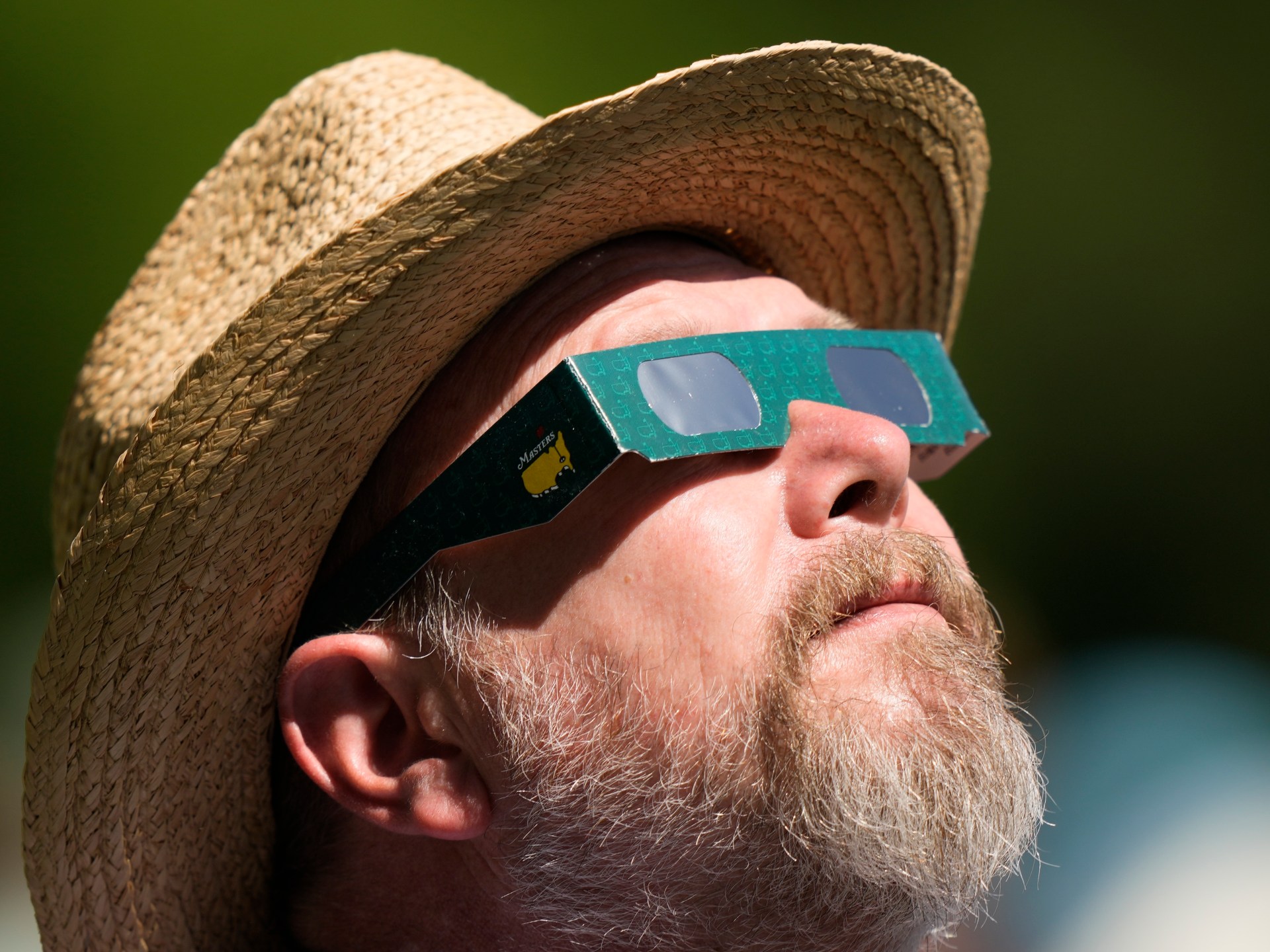Residents in North America look to the sky for a rare total solar eclipse | Space
A major golf tournament ground to a halt. Schools emptied of students. And thousands of people across North America turned their eyes to the sky to watch a rare celestial event.
On Monday, parts of Canada, Mexico and the United States were treated to a total solar eclipse, a phenomenon that will not arise for another two decades.
Full total eclipses are not uncommon, exactly: They happen once every 18 months or so, when the moon passes in front of the sun, blotting out its light.
But most solar eclipses happen where people cannot see them – in isolated stretches of the ocean, for instance. Monday’s total solar eclipse, therefore, offered a relatively rare chance for scientists and star-gazers alike to bask in the shadow cast by the moon.
The last time a total solar eclipse happened in North America was in 2017. The next opportunity for North Americans will come in 2044 and 2045, though other regions around the world will get their chance sooner.
In 2026, for instance, a total solar eclipse is expected to sweep south from the Arctic, appearing over Greenland, Iceland and parts of Spain.
Monday’s celestial spectacle began at about 11am local time (18:00 GMT) on the west coast of Mexico where the resort city of Mazatlan saw tourists crowd its beaches to watch.
The path of totality – the stretch of land where the total solar eclipse was visible – swept from northern Mexico to the central US state of Texas, where the prospect of severe weather forced the cancellation of a local eclipse festival.
The Texas Eclipse Festival in Burnet cited “risks of high winds, tornadic activity, large hail, and thunderstorms” as reasons for scrapping the four-day event.
The path of totality continued north through the southern US and into the northeast, tracing the border with Canada.
Schools in US states like New York, Ohio, Pennsylvania and Indiana cancelled classes and shuttered for the day, partly to let the students enjoy the event – and partly out of safety concerns.
The Pine-Richland School District in Pennsylvania, for instance, noted that the eclipse was slated to happen at the same time as classes would otherwise be dismissed.
“The potential is significant for students to be tempted to view it without proper safety precautions while exiting the school building or while getting off of the school bus,” the district wrote on its website.
Even outside of the path of totality, thousands of people gathered in open spaces to catch a glimpse as the moon seemingly took a bite out of the sun.
In Washington, DC, where the moon covered more than 87 percent of the surface of the sun by peak time at 3:20pm local time (19:20 GMT), people gathered on rooftops and at the National Mall to witness the eclipse.
Even at the height of the eclipse, it remained bright outside on the cloudless Monday.
Meanwhile, at the Masters Tournament in Augusta, Georgia – a major US golf championship – players briefly looked up from the green to contemplate an orb much bigger than a golf ball.
The last time the tournament had been interrupted by an eclipse was in 1940. Organisers passed out tournament-branded glasses specially designed for the eclipse, which was only partially visible from the southern state.
Speaking to the PGA Tour website, professional golfer Brian Harman winked at some of the conspiracy theories and folktales circulating about the eclipse.
“This is timed up pretty good,” he joked. “Get to watch the end of the world at Augusta National, right?”
Check out our Latest News and Follow us at Facebook
Original Source







